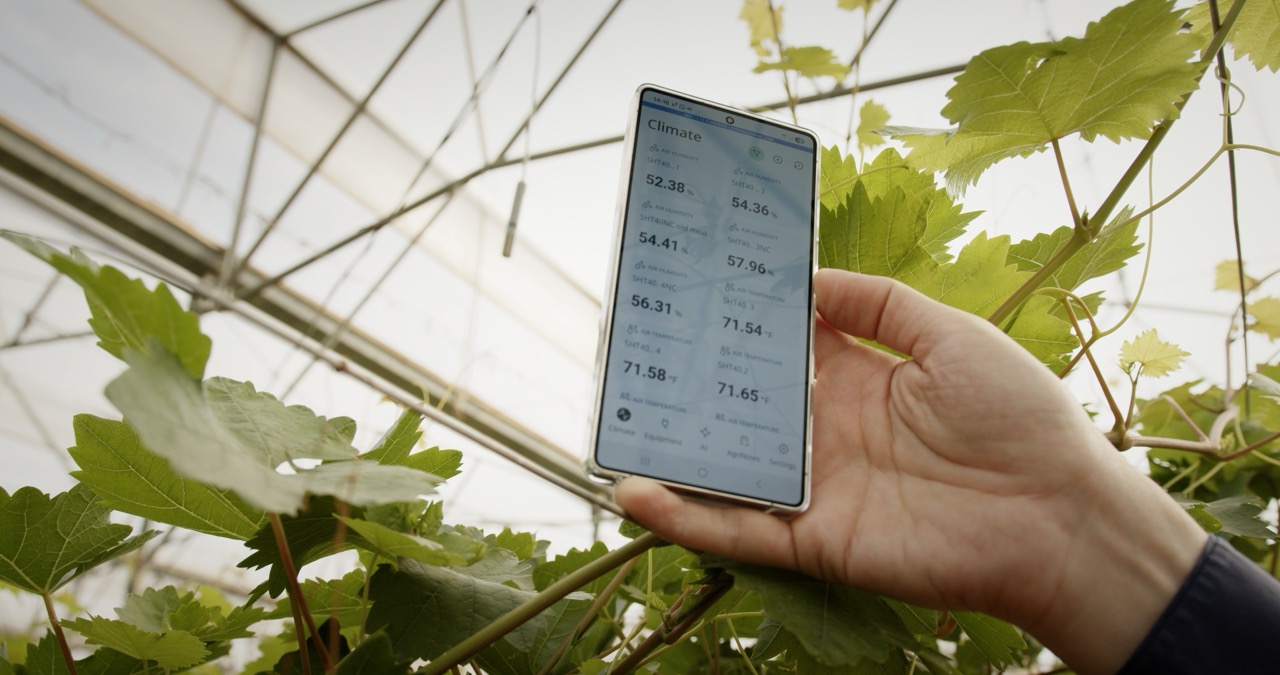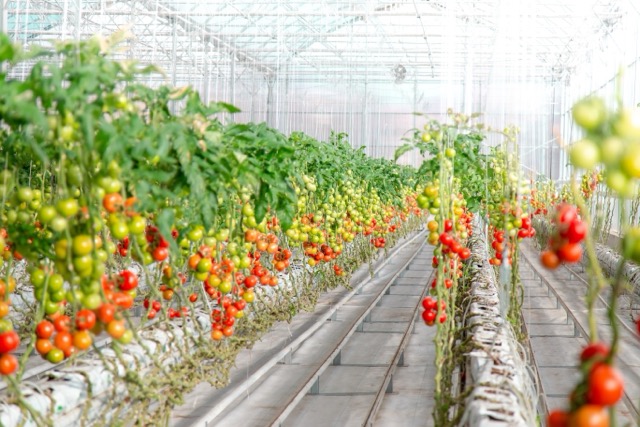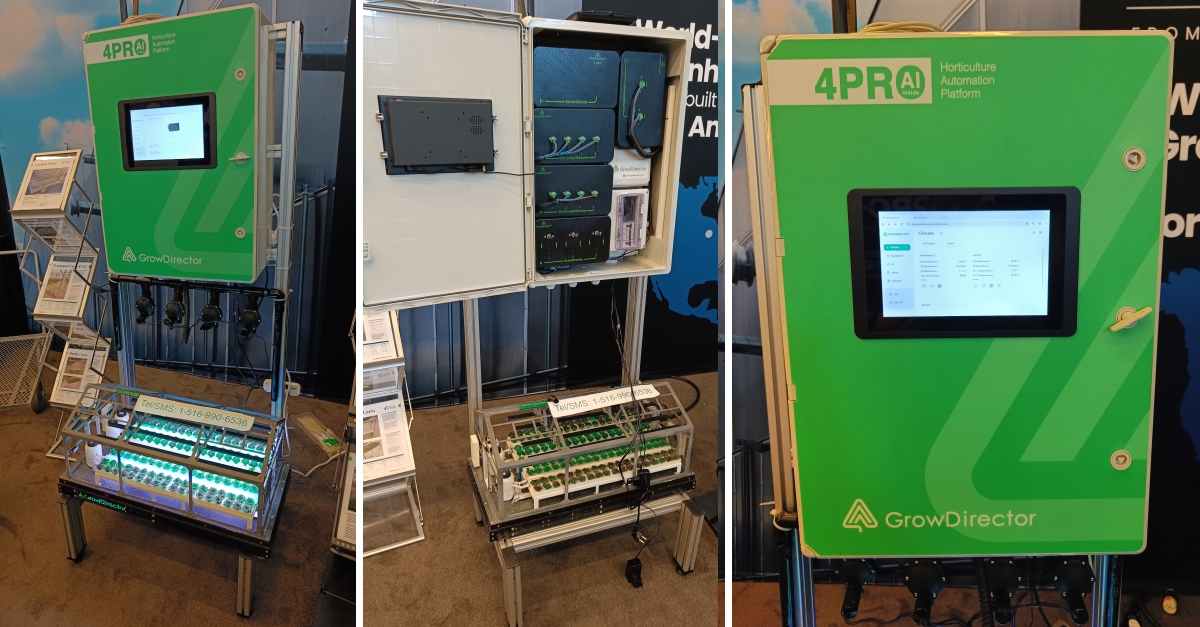
How to Use AI in Horticulture to Save Time and Money
For commercial growers, time equals money. Every hour spent on manual checks is a direct cost, and wasted resources cut into your profits. You don’t need another vague article on the promise of AI in horticulture; you need to know exactly how it makes your operation more profitable.
This guide delivers that practical information. We’ll skip the hype and focus on the real tasks AI in greenhouses can automate, the resources it saves, and the direct impact it has on your daily work and revenue. This is about using smart farming solutions as a tool to carry out your growing strategy with a new level of precision.
From Manual Labor to Automated Strategy: Real Time Savings
Think about the first hour of your day: walking the zones, checking pH/EC levels, looking for irrigation issues, and adjusting vents. This is valuable time that adds up to a major labor cost over a year.
An AI-driven system changes this routine. Instead of you reacting to problems, the system proactively manages the environment based on your targets:
- Automated Climate: The system holds your target Vapor Pressure Deficit (VPD) by automatically controlling vents, fans, and shades. You no longer have to react to passing clouds; the system does it for you, ensuring the climate stays in the optimal growth zone.
- Precision Fertigation: Forget manual dosing. You set the target Electrical Conductivity (EC) and pH, and the system handles the rest. It uses inline sensors to ensure every plant gets the same nutrient mix, 24/7. This is a core function of modern smart farming solutions.
- Remote Oversight: Check that all zones are running perfectly from your phone or computer before you even arrive. The system alerts you if any setting goes out of range, letting you focus on strategy, not repetitive checks.

Cutting Costs with Precision: How AI in Horticulture Saves Resources
Wasted resources are wasted profit. Even with a great team, manual adjustments can’t match the efficiency of a system making data-driven decisions every minute. Using AI in greenhouses directly cuts waste where it costs you most: water, nutrients, and energy.
- Water & Nutrients: Instead of watering on a timer, crop monitoring AI uses data from substrate sensors to irrigate only when the plant needs it. This on-demand approach prevents overwatering, reduces nutrient runoff, and can cut water and fertilizer use by 20-30%, saving thousands over a season.
- Energy: An intelligent system uses weather forecasts to make smarter energy decisions. For example, if it knows a cold front is coming, it can pre-heat the greenhouse with cheaper off-peak electricity. It also manages lighting effectively, turning them on only when natural light (measured by a PAR sensor) drops below your target.
Protecting Your Profit: Better Yields and Loss Prevention with AI in Horticulture
Saving money is key, but maximizing revenue is how you grow. The constant, stable conditions provided by AI in horticulture have a direct, measurable impact on your harvest.
Plants that are never stressed are more resilient and produce higher-quality yields – like tomatoes with a higher brix, or flowers with thicker stems that get a better price. A dedicated crop monitoring AI is also your best defense against crop loss. It can:
- Predict Disease: By analyzing climate data, the system can flag conditions ideal for outbreaks like powdery mildew, giving you time to act before you see the problem.Identify
- Equipment Failure: The system alerts you instantly if a pump fails or a vent gets stuck, preventing crop damage that might go unnoticed for hours.
A Closer Look: The GrowDirector AI Horticulture Platform
So, how do these pieces come together? An integrated system like GrowDirector is built on a few core components that work in unison:
- The Brain (Controller): This is the central hardware unit that connects to all of your sensors and equipment. It receives data and sends out commands based on the grower’s setpoints.
- The Senses (Sensors): A network of sensors for climate (temperature, humidity, CO2), substrate (moisture, EC), and water (pH, EC, temperature) provide the system with a complete, real-time picture of the greenhouse environment.
- The Hands (Automation): The controller is physically connected to your equipment—pumps, dosers, vents, lights, fans. It acts as the “hands” that execute your strategy automatically, 24/7.
This unified approach ensures that every part of your greenhouse is working towards the same goal, creating a perfectly stable environment for your crop.

The Grower’s Dashboard: Turning Data into Decisions with AI in Horticulture
A major benefit of smart farming solutions is having all your data in one place. Instead of handwritten logs, all historical sensor data is on a single dashboard, a core feature of the GrowDirector platform. This information is a goldmine for an experienced grower.
You can compare data to find what works best. For example, you might see that a specific VPD range leads to higher yields. You can then use that insight to adjust your targets for the next crop cycle. This turns your crop monitoring AI from an alert system into a strategic planning tool and is a key feature of effective AI in greenhouses.
Conclusion: A Practical Tool for the Expert Grower
Making AI in horticulture save you time and money isn’t about replacing the grower; it’s about empowering them. An AI control system is a tool that takes your expert strategy—your targets for VPD, EC, and temperature—and executes it perfectly, 24/7.
By automating routine work and maintaining perfect conditions, you cut costs and increase the value of your yield. It provides a clear return on investment by letting you focus on what you do best: growing.
Ready to see a direct impact on your bottom line? Explore how an integrated control system like GrowDirector provides the tools to make your greenhouse more efficient and profitable.